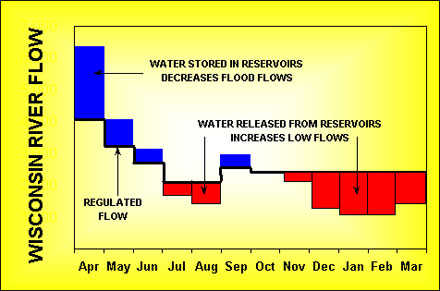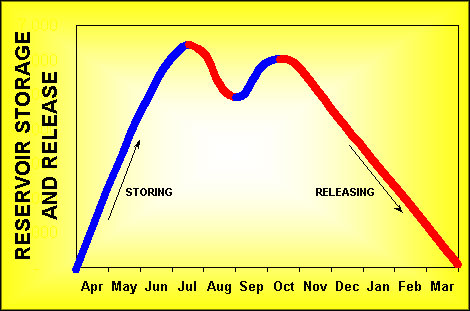Reservoir System Operation Cycle

The reservoir operation cycle is driven by two primary factors: the goal of uniform flow on the Wisconsin River and meteorological conditions (amount and timing of rainfall, snowfall, and snowmelt). Since meteorological conditions are highly variable, both river flow and reservoir storage will vary from year-to-year. For example, total precipitation can vary from less than 20 inches to more than 40 inches in a year.
Spring
Snow that has accumulated over the winter season melts during late March and early April and precipitation changes to rain. This can produce a significant amount of runoff because the ground is wet and may be frozen. As a result of the snowmelt and rainfall runoff, natural river flow is normally very high and can reach flood levels. To produce a more uniform river flow, water is stored in the reservoirs to lower the naturally occurring flood flows.
Summer
Evaporation and water used by plants decreases the amount of runoff and groundwater available to support river flow. As a result, natural river flow declines. To produce a more uniform river flow, water is released from the reservoirs to augment the naturally low flows.
Fall
Natural water losses to plants and evaporation decline as a result of cooler temperatures and shorter days. Natural river flow increases as fall rains produce more runoff. Some of this excess flow is used to replenish reservoir storage that was used during summer.
Winter
Precipitation turns to snow and runoff ceases. Natural river flow again drops. Reservoir water is released throughout the winter season to augment river flow. Reservoir storage is normally lowered to the minimum allowable level by late March. This maximizes winter flow augmentation and at the same time provides maximum reservoir storage for reducing spring flood flows.

